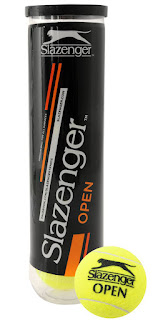Tennis ball tins are always full of many protective items. We all wonder why it needs so many layers of installation. I mean, there's a removable metal lid, and then a plastic lid. All of these layers are provided to close the inner pressure of the can. Tennis ball tins are pressed for better performance.
Each tennis ball has a certain amount of gas inside which the manufacturers seal inside the cans. That's why you hear the sound when you open the can. New tennis balls in UK with a pressure of 14 psi. This is done so that the ball retains the feel of a new ball.
Pressure saves the life of a football shelf. The ball is still the same day it was built and the day it was opened for this reason. Once the tin is opened, the pressure starts to flow. Balls are recommended for use in approximately 9 to 10 games. After that, the ball begins to lose internal pressure. It doesn't explode properly. Internal pressure is equal to the pressure of natural air.
Bounces are very important in tennis. Tennis balls are designed to enhance the quality and competitiveness of the game. This is why the pressure inside the cans is so important.
In many competitions, tennis ball cans are refrigerated to
keep the pressure off. High temperatures often cause tennis balls to lose
pressure. This is because high temperatures cause the rubber molecules to move
from place to place.
There are also balls without pressure. They are made of strong and durable rubber. Non-pressure balls are used for training. In non-pressure balls, the bounce does not move easily.
They are very heavy so they are not used in competitive sports as they can cause injury. Normal balls are stronger and give more spin compared to pressure. They also leave very quickly.
Non-pressure balls appear dead from the start. They soften over time as the rubber cover of the ball begins to age. The ball gets better over time, unlike the pressed balls that pierce from the start.
Since the balls are not under heavy pressure, the racket needs to be hit hard. This increases the chances of injury. Another feature about balls that do not have pressure is that even though their jumping feature increases, their rotation factor decreases over time.
There are about 200 types of tennis. Approved by the International Tennis Federation. They go through the testing process and are approved. We will discuss some of the tests tennis balls went through.
Tennis Balls Must Pass
● Acclimatization test
Balls pass the acclimatization test 24 hours. The main focus is on the temperature of the balls at 60% humidity. High temperatures increase ball height and humidity. Therefore, they are tested under strict laboratory conditions.
●
Pre-Design
Testing
There is a pre-shape test in which the ball is pressed three times on three sides. This moves the ball from a fixed position.
● Mass Test
In a tennis ball mass test, the ball is weighed between 56g and 59.4g.
● Size Checking
There are size tests that have been followed for decades. In this test, a tennis ball goes through two tubes. They are passed at different angles by rotating the balls until they reach an acceptable diameter of 65.4 mm to 68.6 mm.
● Conversion test
In this test, the ball is pressed with a press. The ball is pressed to a power of 80.07n. The machine also detects defects in the ball.
● Rebound Test
This test measures the ball jump. They dropped the ball from a height of 2.54 meters. They calculate the rebound.
● Strength Test
This is a new test. The test includes a scratch box where the tennis ball is tested for fabric wear. They are scheduled to imitate nine games. There are two parts to this test. The first part explores the area without scratches. The second half introduced more balls to the abrasion ball.
Why Do Tennis Balls Have a
Better Bounce?
Tennis balls jump better because the air inside the ball pushes out with more force than when it hits the surface. The pressure inside the ball gives it the ability to bounce back with force.
The tennis ball comes with an airtight cylinder that gives the same amount of pressure inside as it does outside so that it can balance. Thus, the balls retain the pressure and the jump that comes with it.
What Happens to Tennis After Losing Its Jump?
Tennis balls start to lose pressure inside and are thus good to jump. But they can be used. They are used in the training program. They are also used to warm up the lashes of a mini-tennis court. You can squeeze a tennis ball. Repeat this to improve hand strength and grip.
How Long Can a Tennis Ball Be Saved?
The shelf life of a tennis ball is almost six months. Depending on the product. Many people have said shelf life for many years. The ball is said to be incomplete.

No comments:
Post a Comment